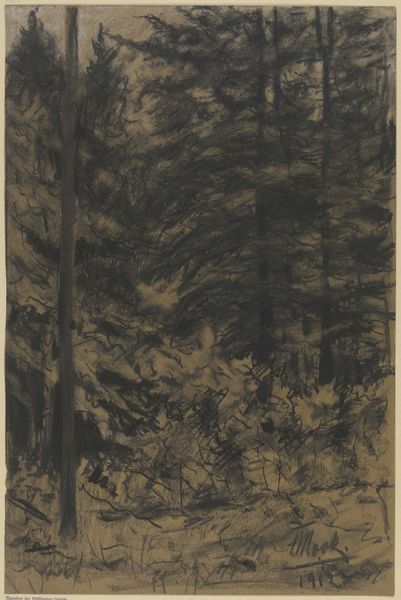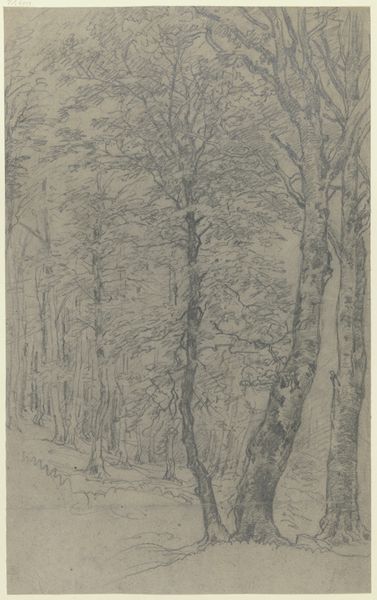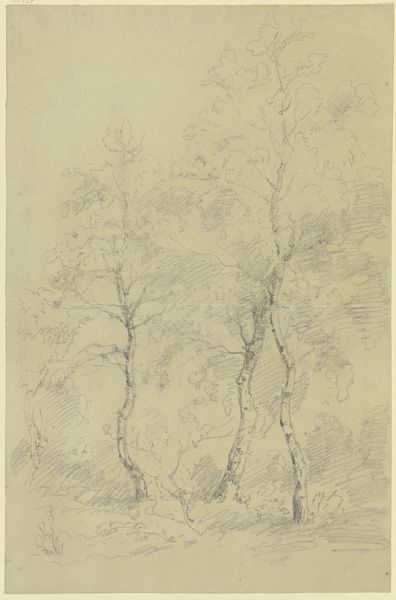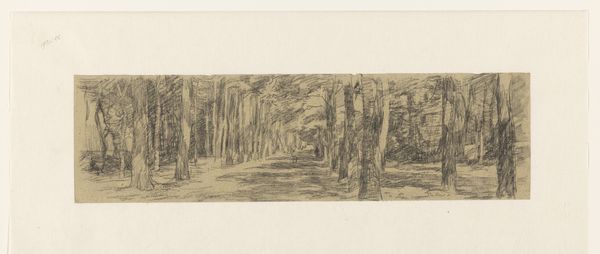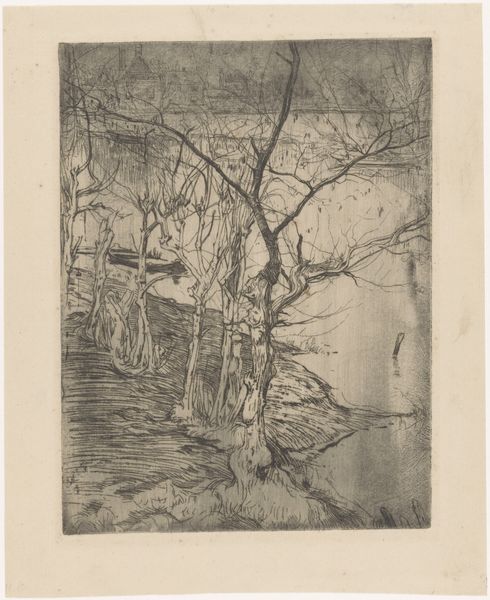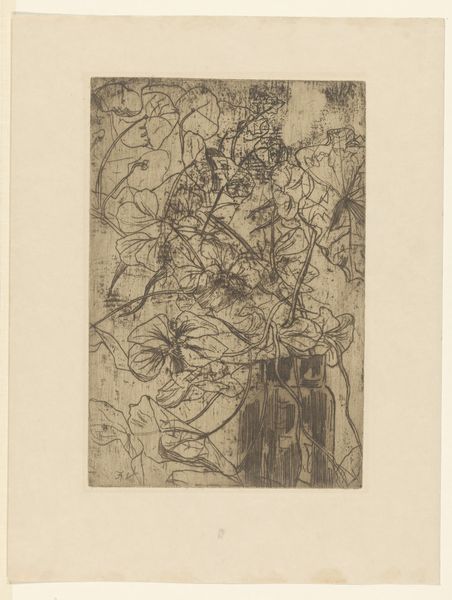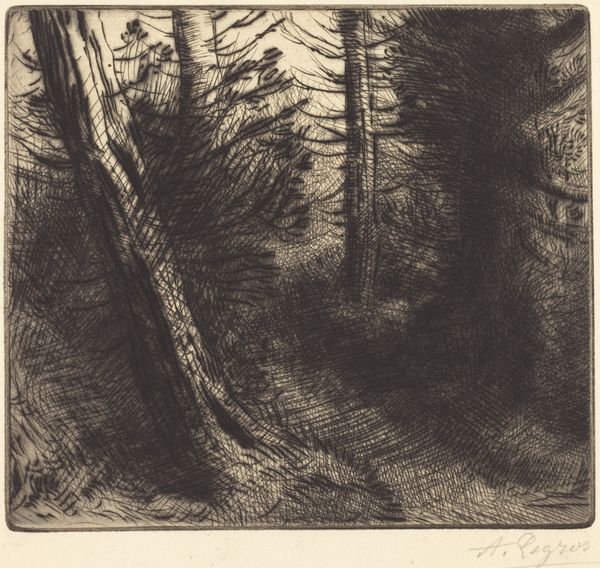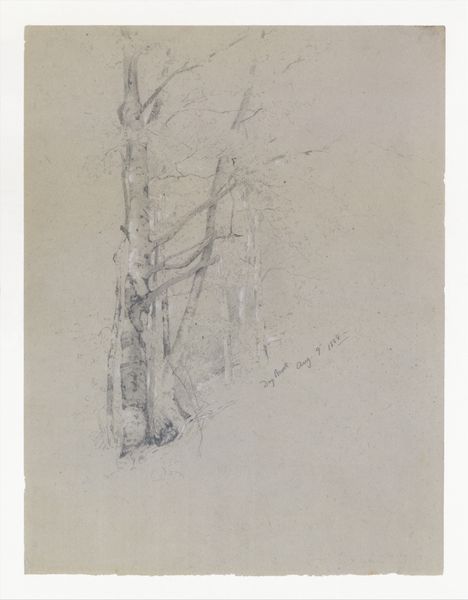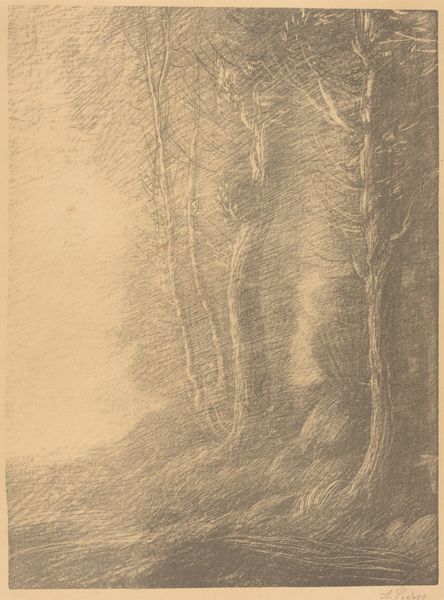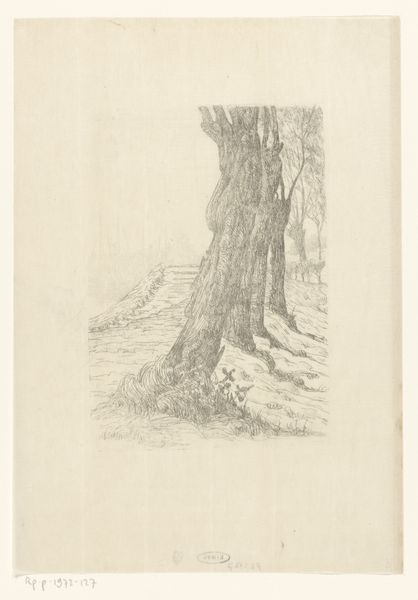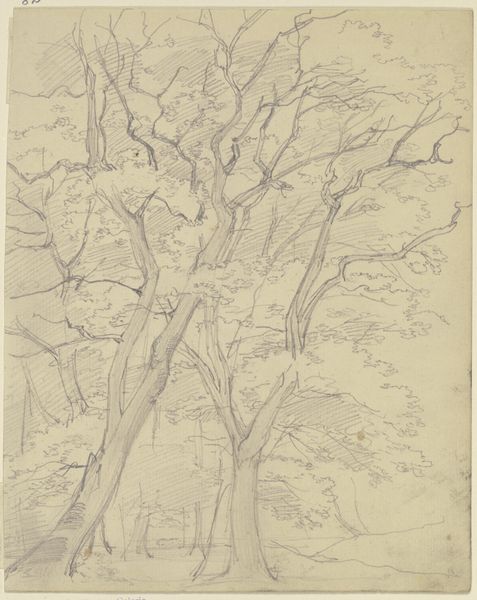
drawing, pencil
#
drawing
#
landscape
#
geometric
#
pencil
#
realism
Copyright: Public Domain
Editor: This is Jakob Maurer’s "Saplings on a slope", a pencil drawing, currently held at the Städel Museum. It's an intricate depiction of trees. It almost looks like a quick study of the forest, carefully mapped out with visible gridlines. How do you interpret this work? Curator: This piece invites us to consider the intersections of human intervention and the natural world. Notice how the gridlines overlay the organic forms. Doesn't this clash evoke thoughts about how humans seek to control and organize nature, often disrupting ecological balance? Consider also, who historically has had access to land and resources to “map it”? Editor: That’s interesting, I hadn't thought about that. I was so focused on the trees themselves. So you're suggesting the act of mapping reflects broader power dynamics? Curator: Precisely. Think about the history of landscape art itself. It often served to legitimize land ownership and colonial expansion. This simple drawing, through its gridded structure, can open conversations about environmental justice, ownership, and the lasting effects of those historical actions. Where do you feel the drawing unsettles you? Editor: The starkness, perhaps. It is pretty bare-bones with no vibrant colors or striking features. Curator: Could this starkness, in a way, echo the bareness that occurs once nature is stripped of its resources or controlled? Is the lack of "life" an active comment on current political matters? What if Maurer is not making just a landscape but critiquing what landscape signifies? Editor: That reframes the drawing completely. Instead of a simple landscape, it’s an invitation to reflect on the environmental and societal impact, not just of industry but of art itself! Curator: Exactly. It’s about questioning what we take for granted, the seemingly benign act of observing nature. The drawing reminds us of how implicated we are in the landscape that we're observing and documenting.
Comments
No comments
Be the first to comment and join the conversation on the ultimate creative platform.
